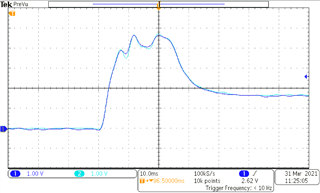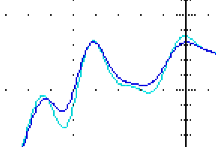Other Parts Discussed in Thread: TLV2371
Hi, Support Team
I have received an inquiry from a customer regarding the contents of the datasheet.
Among the specifications shown in the figure below, this is an inquiry based on IOH.
1.What does IOH mean?(-1mA, -5mA)
2. Why are the output voltage min. and typ. values different according to the IOH value?
The customer company conducted a test with two identical products.
These are ch1 and ch2 in the figure below.

[Condition]
Vin: 0~3V variable
A 220ohm resistor is connected in series to the output terminal.
When the above waveform is enlarged, there is a difference of 0.1 to 0.2V between ch1 and ch2.
What is the reason?


Thanks.
Regards,
MJ


